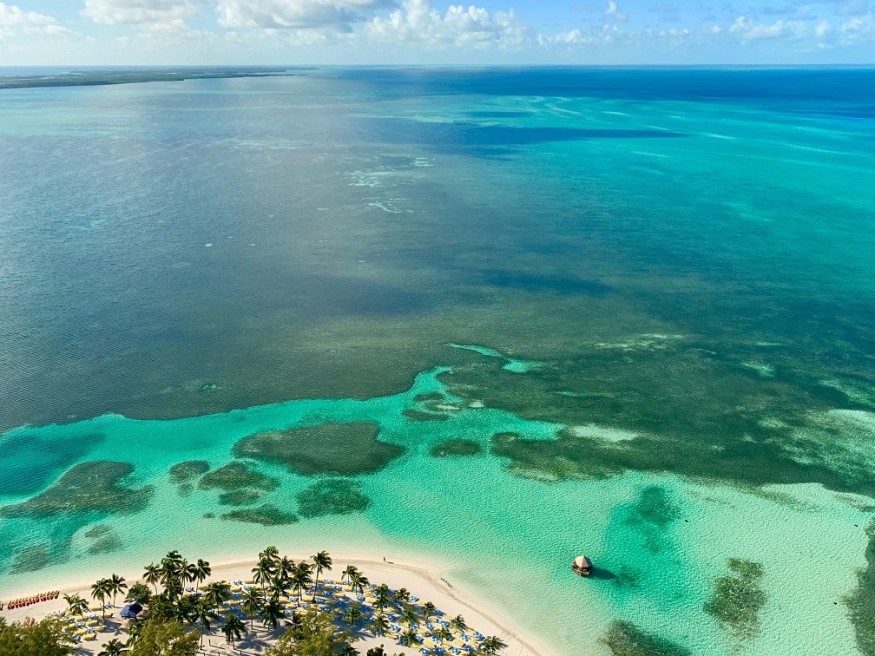Clemson Landscape Architecture Students Envision Sustainable Solutions for Tarpum Bay Waterfront

When thinking of The Bahamas, visions of pristine beaches and azure waters often come to mind. Now, Clemson University landscape architecture students are stepping up to contribute to preserving this iconic landscape by collaborating with the local government of Tarpum Bay in Eleuthera.
In a recent initiative, a group of undergraduate and graduate landscape architecture students from Clemson, under the guidance of Professor Hala Nassar, joined forces with the local government of Tarpum Bay to craft a master plan and design for the Tarpum Bay Waterfront. The project aimed not only to enhance the area's natural beauty but also to address environmental and ecological challenges faced by this picturesque coastal town.
Community-Centric Design
Professor Hala Nassar, community relations and special events officer Shawna McCartney, and Professor Lane Glaze organized a community engagement session in Tarpum Bay. This session served as a platform for the local community to participate actively in planning. Through mapping exercises, feedback sessions, and discussions, the residents of Tarpum Bay shared their insights, needs, and aspirations for the waterfront.
The students then used this valuable input to develop a master plan and design that reflected the community's aesthetic preferences and catered to their practical requirements. The engagement with the local community became the cornerstone of a project that sought to weave the people's aspirations into the very fabric of landscape architecture.
From Mapping to Master Plan
Tarpum Bay, situated on the archipelago island of Eleuthera, has a population of 766 people, according to a 2010 census, with the waterfront playing a central role in the community's life. The students, both undergraduate and graduate, crafted a variety of projects aimed at promoting accessibility, ensuring safety, and preserving the unique identity of Tarpum Bay.
Projects ranged from creating bungalows to developing a coast park and community center, as well as revitalizing and restoring Tarpum Bay's cemetery. Each project was meticulously designed to contribute to the community's well-being while addressing environmental and ecological factors.
Kai Koopman, a first-year Master of Landscape Architecture student, devised one standout project. Koopman envisioned a new marina, a fish market, a sea-to-table restaurant, and rentable vendor stalls to increase water-related economic opportunities. Emphasizing accessibility, Koopman proposed a fully redesigned main street and a floating boardwalk connecting the marina and businesses to intentional spaces for community members.
Challenges and Considerations
The student projects were visually impressive and demonstrated a keen understanding of the community's needs, environmental considerations, and the cultural context of Tarpum Bay. Koopman highlighted the challenges of designing within limited space, considering fluctuating water levels during sea rise and incorporating community feedback.
Alexandra Ugan's "Coastal Revival" project exemplified a community-centric approach, showcasing the intricate balance between visual aesthetics and practical functionality. Professor Nassar commended the students, stating that their designs not only showcased visual appeal but also addressed the genuine needs of the community.
Designs as Catalysts for Change
As the government official responsible for community relations and special events, Shawna McCartney expressed excitement about presenting the student designs to the Tarpum Bay community in a particular town hall meeting. The meeting is anticipated to attract community members, local government officials, community leaders, and even Central Government representatives.
The hope is that these innovative designs will captivate the community's interest and serve as catalysts for cultural and economic development. McCartney envisions the designs sparking collaborations between residents, governmental agencies, and private partnerships to propel Tarpum Bay toward its full potential.
Professor Nassar is set to lead a group of students to Eleuthera during the Summer semester for a faculty-directed study abroad. This interdisciplinary initiative will focus on landscape architecture and involve the Department of Parks, Recreation, and Tourism Management and the School of Nursing. The study abroad program aims to continue the collaborative efforts to meet the needs of the Eleuthera community and foster sustainable solutions. As Clemson students contribute their expertise to preserving and enhancing Tarpum Bay's waterfront, they are not just creating designs but laying the foundation for a resilient and thriving community.














